First, Material Characteristics of
Q420QE Longitudinal Welded Steel Pipe.
The core advantage of Q420QE longitudinal welded steel pipe lies in its excellent balance of strength and toughness. Q420 indicates a yield strength of 420 MPa, making it a high-strength, low-alloy structural steel. The "QE" suffix signifies that the material has received special quality certification, boasting excellent impact toughness and the ability to maintain good performance at temperatures as low as -40°C. This steel utilizes a microalloying design concept, adding trace elements such as niobium, vanadium, and titanium, combined with a controlled rolling and cooling process, to achieve the dual effects of grain refinement and precipitation strengthening. Compared to conventional Q235B steel, Q420QE's yield strength is nearly 80% higher, while maintaining an elongation above 20%. This combination of high strength and good ductility makes it particularly suitable for structural applications subject to dynamic and impact loads.
Second, the production process of Q420QE straight seam welded steel pipe.
Q420QE straight seam welded steel pipe is primarily manufactured using high-frequency electric resistance welding (ERW) or submerged arc welding (SAW) technology. High-frequency welded steel pipe production lines typically include uncoiling, leveling, shearing, and butt welding, loop stocking, forming and welding, internal and external burr removal, cooling and sizing, and cutting. Temperature control during the welding process is particularly critical. The edges of the tube blank must be heated to a plastic state of 1350-1400°C, allowing the metal atoms to diffuse and bond together under the action of the squeeze rollers. Submerged arc-welded steel pipe, on the other hand, uses a double-sided submerged arc welding process, resulting in more stable weld quality, and is suitable for thick-walled pipe production. Regardless of the process used, post-weld heat treatment is required to eliminate weld stress, and ultrasonic testing and X-ray inspection are used to ensure weld quality. It is important to note that Q420QE material is sensitive to welding heat input, and welding parameters must be strictly controlled during production to avoid overheating that can lead to coarsening of the weld grains, which can affect the low-temperature impact performance of the final product.
Third, the application areas of Q420QE straight seam welded steel pipe.
Q420QE straight seam welded steel pipe, with its high strength-to-weight ratio and excellent seismic performance, demonstrates unique advantages across multiple industries. In the construction sector, it is widely used in the steel structural frames of super-high-rise buildings. Iconic buildings such as the Shenzhen Ping An Finance Center utilize extensive Q420-grade steel pipe. Compared to traditional steel, this material can reduce the structure's deadweight by 15-20%, significantly reducing foundation loads and seismic response. In bridge engineering, Q420QE steel pipe is often used in the arch ribs and tower structures of long-span bridges. For example, key sections of the Hong Kong-Zhuhai-Macao Bridge utilize similar material. Its weather resistance effectively resists corrosion in marine environments. In the construction machinery sector, Q420QE welded steel pipe is increasingly used in components subject to alternating loads, such as crane booms and excavator chassis. Its fatigue life is over 30% longer than that of ordinary steel. Furthermore, Q420QE material demonstrates excellent adaptability in specialized structures such as wind turbine towers and oil pipeline supports.
Fourth, the technological innovation direction of Q420QE straight seam welded steel pipe.
In the future, Q420QE straight seam welded steel pipe will develop towards higher performance and more intelligent production. In terms of material research and development, through TMCP (Thermo-Mechanical Control Process) optimization, the yield strength of the new generation of Q420QE steel plate can reach 460 MPa, while maintaining excellent weldability and low-temperature toughness. In terms of manufacturing processes, new technologies such as laser welding and friction stir welding are gradually being applied to the production of straight seam welded steel pipe, achieving faster welding speeds and smaller heat-affected zones. Regarding intelligence, smart factories based on the Industrial Internet are emerging, optimizing process parameters through big data analysis to achieve precise control of steel pipe quality. Furthermore, innovative composite steel pipes, such as stainless steel composite Q420QE base pipes and corrosion-resistant coated steel pipes, are emerging to meet the needs of use in special environments. From a lifecycle cost perspective, although the initial purchase cost of Q420QE straight seam welded steel pipe is higher than that of ordinary steel pipe, its overall economic benefits are significant. Taking building steel structures as an example, the use of Q420QE material can reduce steel usage by approximately 18%, lowering transportation and installation costs while also increasing usable building area. During service life, its excellent weather resistance and fatigue resistance significantly reduce maintenance costs. According to calculations for a cross-sea bridge project, the use of Q420QE steel pipe reduced the lifecycle cost by 23% compared to traditional solutions, demonstrating the technical and economic advantages of "high strength, low weight." Furthermore, with the renewed recognition of the recyclable nature of steel structures, Q420QE steel pipes are 100% recyclable after dismantling, aligning with the development of a circular economy.
Fifth, Quality Control of Q420QE Longitudinal Welded Steel Pipes
Q420QE longitudinal welded steel pipes require special attention in their actual application. During material acceptance, the consistency between quality certification documents and physical markings should be verified, and re-inspection should be performed as necessary. A process assessment must be conducted before welding to determine the appropriate preheat temperature and heat input range. Mechanical cutting is preferred for on-site cutting. If flame cutting is used, the cut area should be polished. During storage, moisture-proof measures should be taken to prevent rust on the steel pipe ends, which may affect the quality of the grooves. During installation, forced assembly must be strictly controlled to prevent additional stress. Only by fully implementing these quality control measures can the performance advantages of Q420QE material be fully realized.
Looking ahead, with the transformation and upgrading of my country's manufacturing industry and continued investment in infrastructure construction, Q420QE straight seam welded steel pipe will usher in broader development opportunities. Demand for high-performance steel pipes will grow rapidly, particularly in marine engineering fields such as offshore wind power, deep-water ports, and offshore platforms. Furthermore, with the deepening of the Belt and Road Initiative, my country's high-quality steel pipe exports have enormous potential. Industry experts predict that by 2030, the market share of Q420 and above high-strength welded steel pipes is expected to exceed 40%, becoming a mainstream product. In this process, material innovation, process upgrades, and intelligent manufacturing will become the three major engines driving high-quality development in the industry, helping China's steel pipe manufacturing industry gain a more advantageous position in the global value chain.
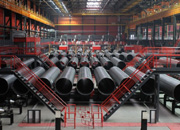 Threeway Steel is known as a professional supplier engaged in manufacturing and distributing a wide range of steel pipe, and our headquarter located the central part of China – Hunan and six associated factories throughout China.
Threeway Steel is known as a professional supplier engaged in manufacturing and distributing a wide range of steel pipe, and our headquarter located the central part of China – Hunan and six associated factories throughout China.
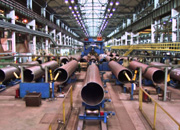 Threeway Steel is known as a professional supplier engaged in designing, manufacturing and distribution of a wide range of steel products with the headquarter located the central part of China – Hunan and six associated factories throughout China.
Threeway Steel is known as a professional supplier engaged in designing, manufacturing and distribution of a wide range of steel products with the headquarter located the central part of China – Hunan and six associated factories throughout China.
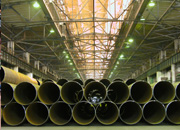 Threeway Steel is known as a professional supplier engaged in designing, manufacturing and distribution of a wide range of steel products with the headquarter located the central part of China – Hunan and six associated factories throughout China.
Threeway Steel is known as a professional supplier engaged in designing, manufacturing and distribution of a wide range of steel products with the headquarter located the central part of China – Hunan and six associated factories throughout China.
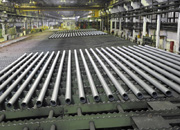 Threeway Steel is known as a professional supplier engaged in designing, manufacturing and distribution of a wide range of steel products with the headquarter located the central part of China – Hunan and six associated factories throughout China.
Threeway Steel is known as a professional supplier engaged in designing, manufacturing and distribution of a wide range of steel products with the headquarter located the central part of China – Hunan and six associated factories throughout China.
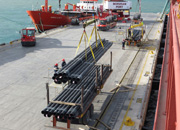 Threeway Steel is known as a professional supplier engaged in designing, manufacturing and distribution of a wide range of steel products with the headquarter located the central part of China – Hunan and six associated factories throughout China.
Threeway Steel is known as a professional supplier engaged in designing, manufacturing and distribution of a wide range of steel products with the headquarter located the central part of China – Hunan and six associated factories throughout China.

